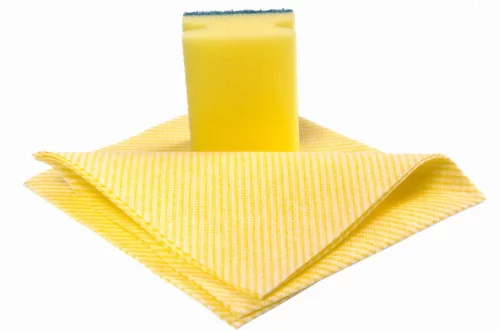
Choosing the Right Knee Brace to Prevent Hyperextension Effectively
Knee hyperextension is a common issue that can lead to significant discomfort and injury. It occurs when the knee joint bends backward beyond its normal range of motion, often resulting in strains, sprains, or even tears in ligaments. Whether caused by athletic activities, accidents, or simply the natural aging process, hyperextension can affect anyone at any time.
To combat this, many individuals turn to knee braces as a preventive measure. These supportive devices can provide stability, reduce the risk of injury, and enhance overall performance during physical activities. Choosing the right knee brace is crucial in effectively preventing hyperextension and ensuring optimal knee health. With a myriad of options available on the market, making an informed decision can be overwhelming. Factors such as fit, material, level of support, and intended use must be considered.
Understanding these elements will help individuals select a knee brace that not only meets their needs but also enhances their overall mobility and comfort. This article delves into the various aspects of knee braces, helping you to make an educated choice for your knee health.
Understanding Knee Hyperextension and Its Causes
Knee hyperextension occurs when the knee joint extends beyond its normal straight position. This condition can happen during various activities, including sports like basketball, soccer, and gymnastics, where abrupt stops or changes in direction are common. Additionally, hyperextension can result from falls, improper landing techniques, or even lifting heavy objects incorrectly.
Several factors contribute to the likelihood of experiencing knee hyperextension. For instance, individuals with weak muscles surrounding the knee are more susceptible to this condition. When the muscles that support the knee are not strong enough, they may fail to stabilize the joint adequately, leading to hyperextension. Similarly, individuals with previous knee injuries may have weakened ligaments or altered biomechanics, increasing their risk.
Another contributing factor is the presence of certain anatomical features, such as hypermobile joints or excessive flexibility. While flexibility can be advantageous in many physical activities, it can also predispose individuals to injuries, particularly in the knee joint.
Understanding these causes is essential for anyone considering the use of a knee brace. By recognizing the factors that contribute to hyperextension, individuals can take proactive steps to prevent it and select the most suitable brace for their needs.
Types of Knee Braces and Their Functions
When selecting a knee brace, it is essential to understand the different types available and their specific functions. Generally, knee braces can be categorized into three primary types: prophylactic, functional, and rehabilitative.
Prophylactic knee braces are designed to prevent injuries during athletic activities. These braces provide support and stability to the knee joint, reducing the risk of hyperextension and other injuries. Athletes often wear prophylactic braces during contact sports where the risk of knee injuries is heightened.
Functional knee braces are typically used by individuals who have already sustained a knee injury. These braces offer additional support to the damaged ligaments and help restore stability to the joint. Athletes returning to their sport after an injury often rely on functional braces to aid in their recovery and prevent re-injury.
Rehabilitative knee braces are used during the recovery process following surgery or a significant injury. These braces limit the movement of the knee, allowing it to heal properly. They are often adjustable, enabling healthcare providers to restrict motion as the patient progresses through rehabilitation.
Understanding the different types of knee braces helps individuals choose the right one based on their specific needs and circumstances. Whether aiming to prevent injuries or support recovery, there is a brace designed to meet every requirement.
Factors to Consider When Choosing a Knee Brace
Selecting the right knee brace requires careful consideration of several factors to ensure it effectively meets your needs. One of the most critical aspects is the fit. A knee brace that is too loose may not provide adequate support, while one that is too tight can cause discomfort and restrict blood flow. It is essential to measure the knee and select a brace that corresponds to your measurements for optimal fit and support.
Material is another factor that plays a significant role in the effectiveness of a knee brace. Many braces are constructed from breathable materials that wick moisture away, keeping the skin dry and comfortable during physical activities. Additionally, some braces include neoprene or elastic materials that provide compression, which can help reduce swelling and enhance circulation.
The level of support offered by the brace is also crucial. Some individuals may require a simple sleeve for light support, while others may need a more rigid brace with additional straps for enhanced stability. Assessing your activity level and specific needs will guide you in choosing the appropriate support level.
Lastly, consider the intended use of the knee brace. If you plan to engage in high-impact sports, a more robust, supportive brace may be necessary. Conversely, for everyday use or light activities, a more flexible and comfortable brace may suffice.
By evaluating these factors, individuals can select a knee brace that provides the necessary support and comfort to prevent hyperextension effectively.
Maintaining and Caring for Your Knee Brace
Once you have selected the right knee brace, proper maintenance and care are essential to ensure its longevity and effectiveness. Regular cleaning is crucial, especially if you wear the brace during physical activities that can cause sweat and moisture buildup. Most knee braces can be hand washed or machine washed on a gentle cycle. It is advisable to check the manufacturer’s instructions for specific cleaning guidelines.
Inspecting the brace regularly for signs of wear and tear is also important. Look for frayed straps, damaged fabric, or compromised support structures. If you notice any significant damage, it may be time to replace the brace to ensure optimal protection for your knee.
Storing the knee brace properly when not in use can also extend its lifespan. Keep it in a cool, dry place away from direct sunlight, which can deteriorate the materials over time. Avoid folding or compressing the brace excessively, as this may affect its shape and effectiveness.
Lastly, if you experience any discomfort or changes in your knee condition while wearing the brace, consult a healthcare professional. They can provide guidance on adjusting the brace or suggest alternative options to ensure optimal support and effectiveness.
In conclusion, selecting the right knee brace is a key step in preventing hyperextension and maintaining knee health. By understanding the various types of braces, considering essential factors, and caring for your brace properly, you can enhance your mobility and protect your knees during physical activities.
**Disclaimer:** This article is for informational purposes only and should not be considered medical advice. Always consult a healthcare professional for health concerns or conditions.




